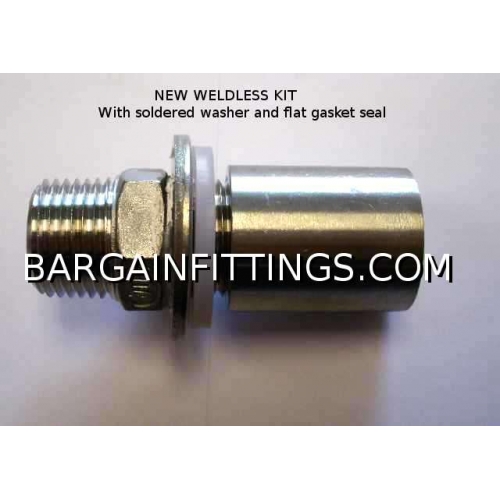It's rare that a week goes by that we don't see posts from people trying to convert a cooler to a mash tun or add bulkheads to new pots and having a really hard time getting things to not leak.
First I want to provide the appropriate disclaimer that I sell bulkheads and parts to DIY bulkheads. I'm not posting this as a sales pitch. What I hope to do is provide you with examples of good and bad bulkhead designs and why they are good or bad. If you want to create DIY bulkheads from parts picked up from various sources, go for it. Just please be informed as to what works and what doesn't.
The first thing to consider obviously, is what's going to stop the water? Put yourself inside the vessel, shrunken down to a water molecule. Figure out how to get out through whatever assembly you're imagining.
If a fitting is going press a gasket up against the wall of the cooler or pot, is there any other way for water to get out? If you have a stainless washer pushing against the gasket, it better be soldered to the nipple or the threaded fitting behind it. Here are a few bad designs.

This one is a little interesting in that the two interior SS washers are bringing the large oring up onto the unthreaded area on the nipple. If tightened just right, compression of the oring will squeeze itself against the nipple. The only trouble is, just one tweak too tight and the oring will bulge out of place and leak.


You can find a hundred online shops selling this design and it's a real shame. What it does is continue to tarnish the reputation of using weldless fittings based on how hard it is to get them to seal. Liquid goes between the coupling and SS washer, hits the threads and spirals through right past the oring. The only way to stop this from happening is to pack the threads with teflon tape to the point where the oring with seal against the tape. It's jury rig all the way. Since each post can only have 4 pics, I'll put good designs in the next post.
First I want to provide the appropriate disclaimer that I sell bulkheads and parts to DIY bulkheads. I'm not posting this as a sales pitch. What I hope to do is provide you with examples of good and bad bulkhead designs and why they are good or bad. If you want to create DIY bulkheads from parts picked up from various sources, go for it. Just please be informed as to what works and what doesn't.
The first thing to consider obviously, is what's going to stop the water? Put yourself inside the vessel, shrunken down to a water molecule. Figure out how to get out through whatever assembly you're imagining.
If a fitting is going press a gasket up against the wall of the cooler or pot, is there any other way for water to get out? If you have a stainless washer pushing against the gasket, it better be soldered to the nipple or the threaded fitting behind it. Here are a few bad designs.

This one is a little interesting in that the two interior SS washers are bringing the large oring up onto the unthreaded area on the nipple. If tightened just right, compression of the oring will squeeze itself against the nipple. The only trouble is, just one tweak too tight and the oring will bulge out of place and leak.


You can find a hundred online shops selling this design and it's a real shame. What it does is continue to tarnish the reputation of using weldless fittings based on how hard it is to get them to seal. Liquid goes between the coupling and SS washer, hits the threads and spirals through right past the oring. The only way to stop this from happening is to pack the threads with teflon tape to the point where the oring with seal against the tape. It's jury rig all the way. Since each post can only have 4 pics, I'll put good designs in the next post.








